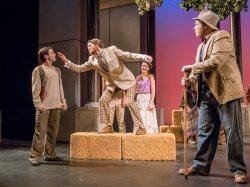The Virtual Student Center is a place to gather, discover and spotlight the tremendous and varied creative imaginations of Montclair State University undergraduate and graduate students.
Current Project
Spring 2020
April is National Poetry Month!
The CRC is thrilled to feature the BA Theatre Studies Program in the College of the Arts and one of its “star” student poets and dramatists, Janeena Piñero-Deniz introduced by Prof. Jessica Brater and dramaturg Kaitlin Stilwell.
Before Talkies
Click on an image below to enlarge photo.
MFA Dance student Lauren Ohmer spent 27 hours shooting her thesis film BEFORE TALKIES at a house in Jersey City and a green-screen in Long Island City. She plays the roles of three characters — and a cat.
A New Manifesto for Theatre
Click on an image below to enlarge photo.
- Developing the work…
- Aligning the work…
- The work is complete!
Fernando Aspurua, Teresa Buque, Sanjida Chowdhury, Alexa Draganosky, Nicole Dukes, Megan Gato, Courtney McManus, David Mizrahi, Ashlee Morel, Ilana Schimmel, John Waller, Jeff Wingfield, and Nicholas Zaccario — the Fall 2018 Montclair State University Graduate MA Theatre Studies Seminar, THTR 504-01, The Poetics of Theatre, wrote a new manifesto for the 21st century.
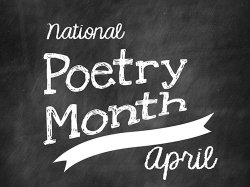
In celebration of National Poetry Month 2018, the CRC is proud to present Uncertainty, by the greatest of Poland’s Romantic poets, Adam Mickiewicz (1798-1855). The poem was translated for the Honors Program Great Books and Ideas seminar by Karolina Minkiewicz, a freshman Family & Child Studies major. The original poem, Karolina’s essay on the process of creating her first-ever translation, and the work itself, are viewable here: Uncertainty

XANADU
Nick Hernandez, Zach Stephens, and Allison Gormley — all recent graduates from Montclair State — felt that their political lives could not be justifiably ignored, and that by attending to and celebrating the often-ignored arts, culture, and lives of their neighbors, they might naturally develop a sense of community. They decided to create this magazine, XANADU, and online forums in order to create a space where they could share these ideas with others.
Semiotics in William Shakespeare’s The Winter’s Tale
The CRC is very proud to publish an essay by Allison Gormley, a senior BA Theatre Studies and English Major here at Montclair State University.
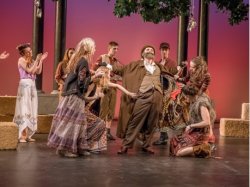
The Making – and Unmaking – of The Winter’s Tale: A Semiology of Costumes was conceptualized in the Fall of 2015 when Allison was a student in THTR 411 – Drama Criticism.
It was expanded and perfected by Allison as an independent study project during the Spring of 2016.
It was one of three essays nominated as a finalist for the Undergraduate Award in the Spring 2016 Montclair State University-wide Student Research Symposium.
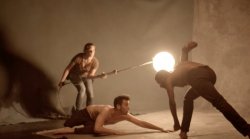
In 2014-15, through generous funding from the Andrew W. Mellon Foundation, the Heidi Latsky Company was in residence as part of Dance for Film on Location at Montclair State University.
In the spring of 2015, the HLC presented the premiere of the dance for film, Soliloquy, choreographed by Ms. Latsky. Into the Eye of Soliloquy, a documentary of the “making of” Soliloquy, was created by a cadre of Montclair State students under the mentorship of Omonike Akinyemi.
A documentary “behind the scenes” of Soliloquy:
A three-part conversation with Dr. Neil Baldwin and Heidi Latsky in Kasser Theatre: Part 1 – Part 2 – Part 3
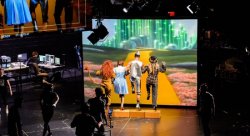
Elements of Oz Through the Eyes of Two Montclair State Theatre Studies Students
From September 26-October 4, 2015, The Builders Association returned to Montclair State’s Alexander Kasser Theater with a new and extraordinary show, Elements of Oz.
Kelsey Mulholland and April Sigler, BA Theatre Studies Seniors, were thrilled to serve as Production Assistants during the run and wrote essays about their “behind the scenes” journey.

The CRC Virtual Student Center proudly presents a guest essay/journal and richly-illustrated tumblr blog by Andrea Claudio, a senior BA Theatre Arts major, who has returned from seven months in the Disney College Program at Walt Disney World.

The Virtual Student Center is thrilled to feature WiredJersey the new, lively, always-changing student-produced Web site in Montclair State’s School of Communication and Media.
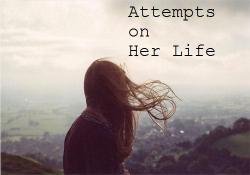
Students in the Montclair State University Department of Theatre & Dance recently presented Martin Crimp’s play, Attempts on Her Life, directed by Prof. Debbie Saivetz in the Fox “black box” space. BA Theatre Studies Major Ally Voris served as Production Dramaturg for the show, creating a tumblr page to help the cast, director and crew navigate the complex highways and byways of the piece.
Ally’s tumblr and her narrative journal/metablog
Imagistation is much more than just the ‘final project’ of the spring 2012 Montclair State University (NJ) Honors Seminar in Great Books and Ideas. During the semester, these sixteen students read deeply in, wrote about, and had endless conversations about the works of Shakespeare, Goethe, Mary Shelley, Whitman, and Freud. The overarching theme of the course was the nature of the imagination: what is it? where is it? what does it do? how does it grow and evolve? At the conclusion of the term, each student was asked to take some pure, introspective time, and come up with a manifestation of their own imagination, in any medium that could be posted to a collectively-designed tumblr site.
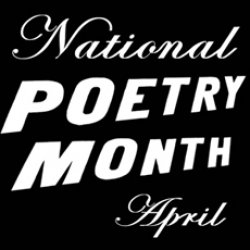
The CRC celebrates National Poetry Month with a selection of extraordinary work by Montclair State University students.
Introductory guest-essay by Prof. Susan B.A. Somers-Willett.
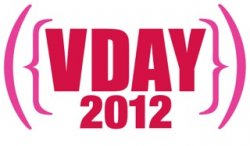
The students of Montclair State University are getting ready for another year participating in the V-Day Campaign to raise funds and awareness to end violence against women and girls. On March 5th and 6th, 2012, at 7:30 p.m., V-Day Montclair will present a two-night benefit reading of Eve Ensler’s award-winning play The Vagina Monologues at Memorial Auditorium.
The Vagina Monologues will be directed by University alumni Brandon Monokian and Allison Andresini. Tickets can be purchased by the general public for $15 and for $10 by Montclair State University students at www.vdaymontclair2012.eventbrite.com. Memorial Auditorium is located in the College of the Arts on the Montclair State University campus: 1 Normal Avenue, Montclair, NJ.
A Student Dramaturg Writes About Stage Door.
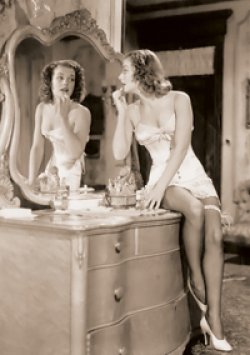
In the months leading up to and through the spectacular production of Stage Door at Montclair State, Jen Wilson kept a tumblr blog going full force, telling the behind-the-scenes saga of Stage Door.
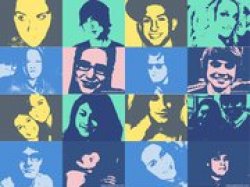
The Facebook Symposium. Entrepreneurial students in the spring 2011 Montclair State University Honors Seminar in the Creative Process decided to establish a collective Facebook page as a unique platform to present their views on the American educational system.
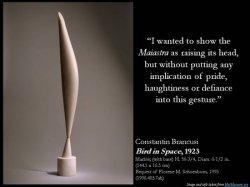
The Montclair State University Fifth Annual Student Research Symposium — with the defining theme Promoting Collaboration Across Disciplines — was convened on Saturday, April 16, 2011 in University Hall.
For the first time in the five-year history of the Symposium, the College of the Arts (CART) participated in the exhibition, panels and oral presentations competition alongside Montclair State’s College of Human and Social Sciences (CHSS), College of Science and Mathematics (CSAM), School of Business (SBUS), and College of Education Human Services (CEHS).
The CART students in the Symposium and their projects were:Angeliki Sergonis (MA, Museum Management) – Brancusi’s Bird in Space and Defining “Art”; Ashli Sisk, Samanta Fricano, Michelle Orsi, Anthony Randen, Ahmed Haris, Brandoff Kristen, Oquendo David, Jauleska Klimentina (MFA, Studio Art) – Student Mural Project; Stephen Kaplan (MA, Theatre Studies) –That’s Why the Lady is a Tramp; Marie Katelynn Altgilbers (MFA Studio Art) –Today’s Social and Political Perspective of the Lesbian Artist; Laura Cirigliano (MA, Arts Management) – Play By Play: Theatrical Darwinism; Chelsea Perino (MA, Public and Organizational Relations) – Social Media and Participation: Impactful or Ineffective?; Kristen Hariton (BA, Theatre Studies) – The Evolution of Dramaturgy Through Technology: The Grapes of Wrath; Sara Isola (BFA, Industrial Design) – Children and Design; August Paule (BA, Broadcasting) – A Light in the Dark; Ivanna Samylenko (BFA, Industrial Design) – Glow-Stop Sign Design; Joseph Lombardo (BFA, Industrial Design) – Human Factors, Design for Safety; Anthony Fragola (BFA, Industrial Design) – Emergency Beacon System; and Gary Anzelmo (BFA, Industrial Design) – Safety Rim.
Of the more than 250 students represented, the two University-wide winners for “Best Interdisciplinary Projects” were CART students Kristen Hariton (undergraduate) and Angeliki Sergonis (graduate).
Kristen Hariton. The evolution of dramaturgy through technology: The Grapes of Wrath
As Dramaturg for The Grapes of Wrath, the Spring 2011 main-stage Theater and Dance production, I constructed a diverse online catalog of information compiled throughout the rehearsal process. My “Blog” consisted of contextual research from both the novel and the playscript, historical connections of the play to present society, and an observation of the theatrical process itself. I uploaded videos, photos, and interactive links among other textual sources for reference in the Blog. It became a resource for the company to utilize in their performances and renderings of the Dust Bowl period. As a dramaturg, I was an “insider with an outsider’s perspective.” I was able to witness and reflect on significant moments in the planning of this massive production, including crucial moments in current society that mirror themes throughout The Grapes of Wrath.
Angeliki Sergonis. [Advisor: Dr. Elizabeth Valdez del Alamo]
Brancusi’s Bird in Space and defining “Art”
In 1928, Constantin Brancusi’s sculpture, Bird in Space, was the subject of a landmark lawsuit, which had a monumental impact on the art world, legal system, and culture of the 1920s and beyond. In deciding if the object was “art” or a taxable “metal utensil,” the case was responsible for expanding the legal definition of art, which affected society’s perspective on the meaning and significance of art. This was of particular importance in the 1920s, only a few years after truly abstract art first appeared in Europe. This paper explores the intersection of the legal and social definitions of “art,” using Brancusi’s Bird in Space. It does not attempt to define or redefine “art,” but explores how the term can be construed, why perceptions differ, and how professionals in the field may be affected by these definitions. Using sources and methods from art history as well as legal studies, the central focus of this research is to help historians, critics, and students have a better understanding of how the legal system can affect “art.” If we understand how “art” is defined within a variety of social institutions, we can then work to prevent that view from becoming too narrow or restrained.
The Grapes of Wrath at Montclair State University – The Story of the Show from Start to Finish — A Tumblr Blog
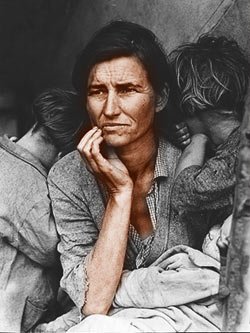
You are on the verge of reading about an epic narrative.
Not only in the theatrical sense, but in the genuine retelling of one of America’s treasured literary classics. After the novel by John Steinbeck was published in 1939, proponents of unionized labor, including Eleanor Roosevelt, took notice and subsequently took action.
The novel also caught the attention of anti-Communist groups, believing Steinbeck to have sympathies towards the Socialist movement.
He was spared the political witch hunt, however, and was able to see the fruits of his labor blossom into regulated labor laws and widespread unionization.
Steinbeck’s Pulitzer Prize-winning saga was transformed for the stage by Frank Galati for the Steppenwolf Theater in 1988, bringing the novel to three-dimensional life. Indeed, this play reaches far beyond the proscenium, recreating the journey of a family struggling to maintain its dignity in the face of extreme adversity, a theme that has become all too familiar in recent years.
You need only read the newspapers to see the Joads’ story jumping off the page and into the current headlines. The core issues in The Grapes of Wrath that Steinbeck so eloquently argued for are now being contested. He likened his novel to putting a “tag of shame” on those responsible for the Great Depression, and Grapes continues today to identify the injustices in society, especially in light of our country’s current economic and social predicaments. Recent union protests in Wisconsin are mirror images of the play’s penultimate scenes. Citizens and immigrants alike are traveling across the country in search of jobs that are few and far between. Hardly anyone has escaped the tumultuous economic downfall of the past few years unscathed, and the number of Americans who have lost their homes is tantamount to tragedy.
The Grapes of Wrath, the story of a family during the Dust Bowl era, is also a reflection of the American people in 2011, another crucial moment in the complex narrative of history. The production you are about to read about served its purpose of entertainment while delivering a message of perseverance and strength that America desperately needs now. Kristen Hariton. BA Theatre Studies, Production Dramaturg. November 22, 2010 -March 15, 2011.
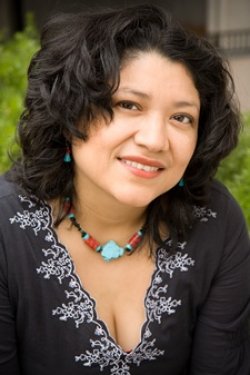
The Latino/a Caucus’ Second Annual Lecture Series
Reyna Grande
Winner of the American Book Award, El Premio Aztlan Literary Award, and International Latino Book Award
Crossing Borders: An Author’s Journey Across a Hundred Mountains
Thursday, March 3, 2011
1:00 p.m.
Student Center Ballroom A
Born in Mexico in 1975, Reyna Grande was raised by her grandparents after her parents left her behind while they worked in the U.S. She came to America at the age of nine as an undocumented immigrant and went on to become the first person in her family to obtain a higher education.
She is the critically-acclaimed author of the novel Across A Hundred Mountains (Atria 2006), for which she received an American Book Award (2007) and El Premio Aztlan Literary Award (2006). Her latest novel, Dancing with Butterflies, was published in October 2009 to rave reviews. It received a 2010 International Latino Book Award in the Best Women’s Issues category.
Words in advance from Reyna Grande! Gina Giardinieri, Montclair State Junior Year Family & Child Studies Major and Latin American Student Organization [LASO] President, interviews the renowned author for The Virtual Student Center of The Creative Research Center:
Gina Giardinieri – Can you share with me and with our many readers on the Creative Research Center Web site what it felt like for you to immigrate here as such a little girl? We know you will be discussing this in your lecture, but wanted to know a bit more about the story in advance
Reyna Grande – I hadn’t seen my father for eight years. He left Mexico when I was two. I was going on ten when he returned for me. I really didn’t know what to expect when we began our journey north. I didn’t understand why we had to run across the border, hiding in the bushes from the border patrol. I also didn’t know we were breaking the law, but even if I had known I would have still done it. I wanted to be with my father so badly. Once in the U.S., life was different — in a good way, and a bad way. My siblings and I finally had enough food to eat. We didn’t have to dress in rags anymore, and best of all, we didn’t have to go barefoot. I was so happy when I got my first pair of tennis shoes! The downside to being in a new country was not knowing the language and feeling like an outcast in school.
GG – When did you start writing – as a child? What inspired you to write your first book?
RG – I started writing when I was thirteen. Since I wanted to learn English faster I started to read books and look up words in the dictionary. Then, I would sit down and write poems using the words I was learning. Little by little, I became a better reader, and I fell in love with books. I wrote my first short-story when I was in eighth grade to practice my English. It didn’t take long for me to fall in love with writing. When I spoke in English my accent was so thick, kids at school would make fun of me. So I spoke less and wrote more. Writing became my favorite way of expressing myself.
GG – When did you first begin to think of yourself as a “professional writer”?
RG – When I got paid for my first novel. But even now, I sometimes don’t feel very “professional” because I don’t write as much as I should. I procrastinate too much. I have too many hobbies–such as gardening–that distract me!
GG – Do you have a specific routine or method for doing your writing? A favorite place you need to be, time of day, and so on…? Do you write for many hours at a time or do you give yourself a limit?
RG – I love writing at night, but unfortunately I can’t do that because I have to be up at 6:30 a.m. during the week to take my kids to school, and then teach a morning class. So, I have to write during the day. I don’t think I write as well during the day! I write in my office. My desk faces the back yard. I’ve been thinking about moving my desk so that it faces the wall instead. I keep looking out the window at the hummingbirds and birds that come to feed from the feeders I have all over the yard. Then I look at my plants; and well, I just want to go outside and garden! But, if I want to finish my novel, I know I have to I stay at my desk and write for a couple of hours at least. There are times, however, when I get so deep into what I’m writing nothing distracts me. I write all day long and when I’m not writing I think about my characters and my scenes. I love it when this happens to me. These periods of intense writing are when I do my best work.
GG – Many artists talk about their work as helping them to get through hard times emotionally. Would you say that writing is your “escape?” If so, please explain.
RG – Writing is my therapy. When I was writing Across a Hundred Mountains I unloaded all the emotions I had carried with me since I was a child. Anger, sadness, frustration, fear, etc. When I finished the novel I felt as if I had taken a great weight off my shoulders. Writing relaxes me. It lets me use my imagination, read lots of interesting books (for research), and it helps me to see the world in a better way. Writers are great observers and listeners. When I go out I notice things other people don’t, I hear things (I eavesdrop a lot), smell things, and I have to store all of those details away and use them when I write.
GG – Who is your favorite writer — and why? Is there a special style or a special way of looking at the world that writer has that inspires you?
RG – I don’t have a favorite writer. I have favorite books. I love books that are written in beautiful language. People have said my writing is “lyrical” and I think it is because I love to read novels that are poetic in tone. Some examples are: The Prophet by Kahlil Gibran, The House On Mango Street by Sandra Cisneros, Caspian Rain by Gina B. Nahai, Train to Trieste by Domnica Radulescu.
GG – What is the most important life-lesson that you hope readers will learn from reading your works?
RG – That’s a hard question. I would have to say that the lesson is that determination goes a long way. My characters are fighters. They want something and they go and get it — no matter how difficult the journey might be.
GG – How do your family and friends feel about your success?
RG – They are very proud of me. They buy my books, go to my readings, and tell their friends about my books so they can buy them, too.
GG – As a successful Latina, what advice would you give to college students of color about the process of striving for their own success in life — whether they want to be writers, doctors, teachers, or other professions – what should we keep in mind as we struggle?
RG – I think the most important thing is to believe in yourself and not let anyone deter you from pursuing your goals. Take pride in your heritage and try to be a good role model for the younger generations. Remember that it only takes ONE person in your family to turn things around. That person could be YOU. My grandparents didn’t go to school. My mother only went to the sixth grade. My father has a third grade education. Me–I have an M.F.A! What’s to stop my children, nieces and nephews from getting PhDs? Nothing. Remember that everything that you do will affect the people around you. I have set my family on a different path now by simply reaching my own goals. You can do that, too.
Reyna Grande. Across a Hundred Mountains. Thursday, March 3, at 1:00 p.m., Student Center Ballroom A. This special event is free and open to the entire Montclair State University community. For further information, contact Esmilda Abreu – 973-655-7130
The third major project featured by the CRC Virtual Student Center had its origins last spring when we entered into a spirited collaboration with INSITE at Peak Performances featuring exemplary student reviews of dramatic presentations on campus.
This year, with heightened enthusiasm for interdisciplinarity (and very open minds!) Montclair State University undergraduates in two courses —Introduction to the Theatrical Medium; and Introduction to Dramaturgy: The Inquiring Spirit – applied their formidable energies to two cutting-edge ACP offerings in mixed-media performance and dance.
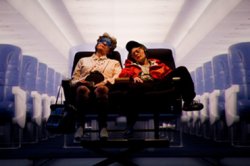
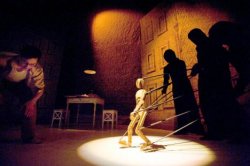
and then wrote their inspiring critiques for the INSITE Student Forum.
In future iterations, central to its stated mission, the CRC will continue to display imaginative, unvarnished, revealing writing by the students of Montclair State University.
The Creative Research Center would like to thank Jed Wheeler, ACP Executive Director; and Carrie Urbanic, Director of Outreach for Peak Performances/ACP, for their commitment to featuring student writings about the performing arts.
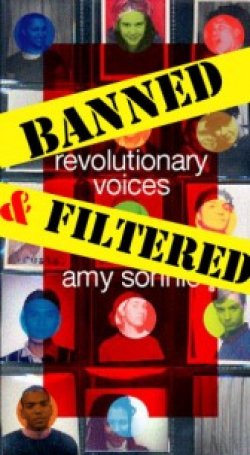
The second major project spotlighted by the CRC Virtual Student Center is a bold literacy initiative headed by Montclair State graduate Brandon Monokian — Revolutionary Readings.
This new social issue piece is a theatrical reading of Revolutionary Voices, a classic literary anthology of works by LGBTQ youth from Alyson Books edited by Amy Sonnie.
Monokian and his Montclair State colleagues came up with the idea for the public readings in response to a decision made this past spring by the Rancocas Valley Regional High School Board of Education and the Burlington County Library System to ban the book from their libraries.
Montclair State University graduates involved in this production are Victoria Fear, Alexandra Giorgio, Sarah Grodsky, Emily Tully, Katie McGhee, Simone Serra, and Whitney Shields.
Montclair State University undergraduate participants are Dana Balsamo, Ashley Biel, Kelsey Burke, Daria Feneis, Katie Frazer, Gillian Holmes, Phil Corso, Kaitlin Overton, Jose Paz, Alissa Razzano, Kelly Rice, and Melanie Yan.
Visit Revolutionary Readings to learn more about the group’s mission, history and outreach; and forthcoming performances heading into Banned Books Week, October 25-November 2, 2010.
The inaugural project of the Virtual Student Center is the First Annual Physics and Art Student Photo Exhibition, an interdisciplinary collaboration launched by Dr. Ashwin Vaidya, assistant professor of Mathematics in the Montclair State’s College of Science and Mathematics (CSAM).
Professor Vaidya’s field of interest includes the theoretical and experimental investigation of problems in fluid mechanics, concerning fluid structure interactions and non-Newtonian fluid flow and their implications in fields as diverse as geophysics, environmental fluid mechanics and biofluid mechanics. He is also very interested in photography.
Any physics-related topic — including mechanics, waves, electricity and magnetism, fluids, optics, and/or astronomy — was eligible for entry by CSAM students.
Professor Vaidya sent this illuminating introductory for the Photo Exhibition:
“In his famous and controversial lecture in 1959 titled The Two Cultures, the British mathematician, writer and philosopher, C.P. Snow pointed to a rift between the sciences and arts. He saw this lack of communication between the two intellectual traditions of our society as having serious consequences in our education system and our ultimate development as human beings. This discussion is as relevant today as it was then.
As scientists, I am sure most of us are conscious and appreciative of the creative elements inherent in the scientific process. We can easily recognize beauty and artistic features to varying degrees in our own work.
I am sure there is much to be said for what the arts share in common with sciences in terms of rigor, a sense of enthrallment with the task at hand, and the scientific temper in general. I doubt, however, that enough has been done by either group to bring this fact to the attention of students, the general public, or those at the opposite end of the intellectual spectrum from our own.
We hope that this exhibition will serve in some way in bridging this gap.”
– Dr. Ashwin Vaidya
